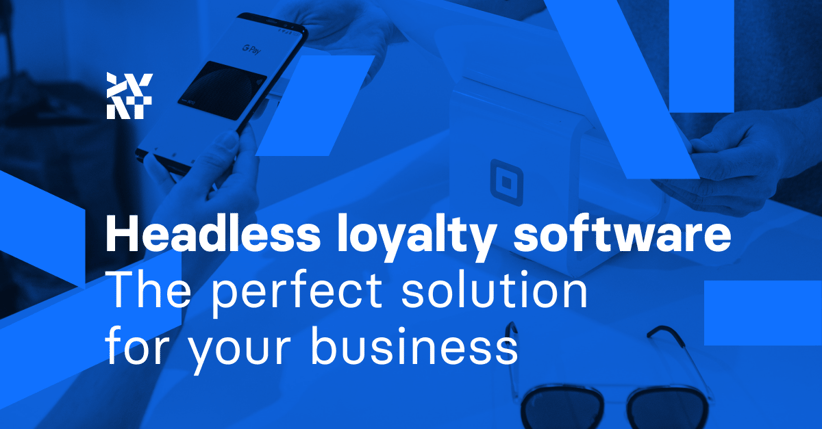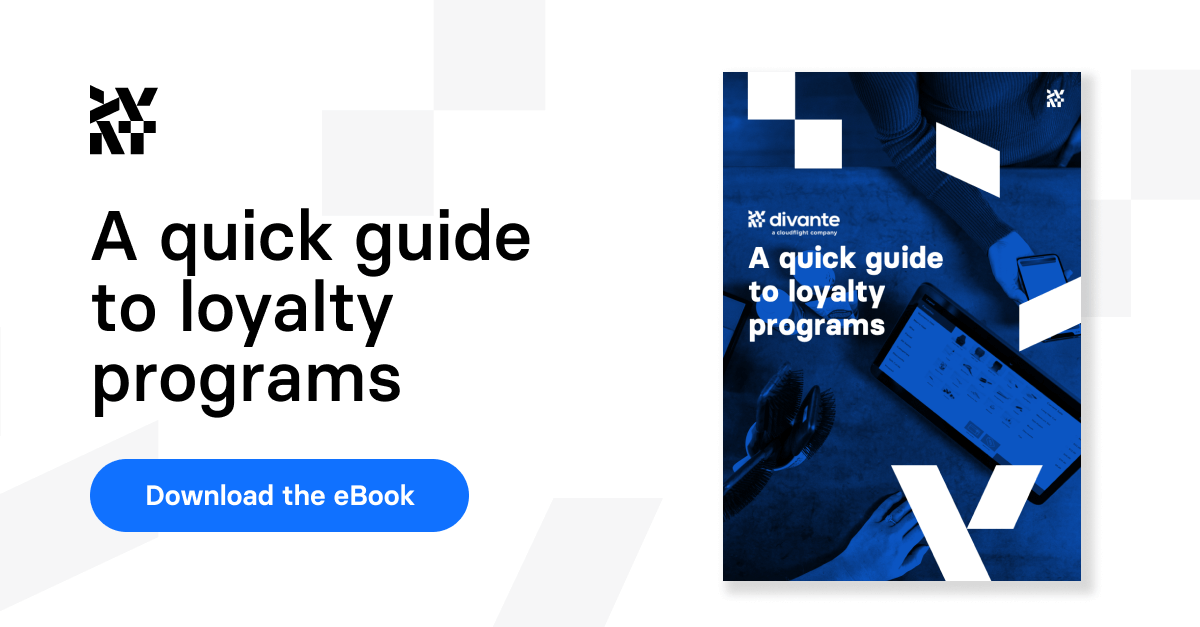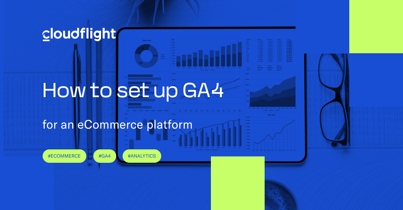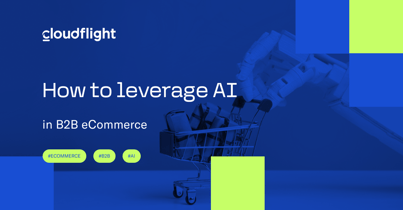These four elements are also the ingredients of the technological ecosystem promoted by the MACH Alliance. It's an organization that wants to help enterprises to future-proof themselves in the world of advanced digitalization.
Today, we’re focusing on the headless approach and its benefits. We believe that it wouldn’t be possible to achieve particular business goals if it wasn’t for such an approach. Monolith products take more time and effort when it comes to front-end customization. Why? We’ll explore that in this article. You’ll learn what a headless approach is, why it’s perfect for loyalty projects, and how Open Loyalty utilizes its headless architecture. Of course, we’re providing examples in the form of case studies.
An explanation of the headless approach to software architecture
The definition from the MACH Alliance website is pretty self-explanatory:
“Front-end presentation is decoupled from back-end logic and channel, programming language, and is framework agnostic.”
You’re probably wondering, how does such a system work? Thanks to API. It enables various connections with front-end applications that provide different functionalities to the final solution. That’s why, oftentimes, headless software products are also considered API-first. They have a solid back-end base that integrates with other providers to deliver specific features to the end-user.
Headless apps have many advantages, and they stand in opposition to monolith platforms whose front-end and back-end layers are tightly connected. Let’s take a closer look.
Why is headless appreciated by enterprises?
As we’ve mentioned, the headless architecture concept has been widely discussed lately. It’s not a coincidence. First of all, it allows companies to be prepared for rapidly changing market and technological conditions. Whatever comes in the next months or years, headless products will have a better chance to stay afloat thanks to their ability to quickly change and rebuild the front end. The front end is the crucial layer for users interacting with particular software. Every time a brand wants to introduce something new to their customers, test a new feature, or follow a current trend in their industry, they can react quicker than their competitors that offer a monolithic app.
Let’s begin with the development process and time to market. Headless apps can help you save some resources. For example, regarding loyalty solutions, you can use a robust, ready-to-use base, like Open Loyalty, to design a front-end layer that will be in tune with your business goals. It would take much more time, money, and effort if you had to create the whole loyalty platform from scratch.
Since the headless approach became a new trend in commerce, the benefit that’s often discussed is how it enables the creation of a highly customized user experience (UX). In today’s world, customers expect to receive highly personalized results, no matter what company they interact with. Monolith systems can’t deliver that because they can’t be updated so seamlessly. With headless, the front end can be tweaked while the back end remains untouched. This means that you can test various features and be responsive when clients come to you with new requirements or problems to solve.
If you already established some kind of digital environment, a headless system can integrate with it perfectly. Basically, this is why it was brought to life in the first place. We have so many high-quality software solutions on the market that sometimes it’s better to connect them with each other than create a completely new product with the same features. If the apps that you’re interested in have API, you can offer your customers value from external sources that already know how to do it right.
We should also mention that headless systems offer better performance, like when it comes to loading times and stability. It’s great not only for the overall experience but also for SEO because Google appreciates websites that work quickly and have user-friendly UX.
Last but not least, going headless can be a step toward a true and successful omnichannel strategy. Monolith architecture isn’t so adjustable, so it’s really difficult to provide a consistent experience across every channel your customers visit to interact with your brand. Headless products, on the other hand, can be shaped to work splendidly on every platform and device your prospects use and provide highly personalized impressions at the same time. This way, your clients will always receive what they need, and it will always be true to your brand’s image.
Headless loyalty: The best choice for your business
Now that you know the basic principles of headless software and are aware of its benefits, we want to get more specific and talk within our area of expertise. Open Loyalty, our go-to headless loyalty solution, is a product that, we believe, can be a game changer for many businesses. The architecture we’ve bet on is the main reason why the platform introduces a completely new quality to this industry. Let’s elaborate more on that.
Here’s a quote from one of our previous articles, which is an in-depth explanation of headless loyalty:
“The headless loyalty software offers a set of flexible and independent modules, like loyalty mechanics and tools such as campaign manager, in its core. That allows for easy integration into your existing ecosystem. Thanks to its robust API and webhooks, it manages two-way communication and shortens the time to market of your project. (...) In practice, companies build their personalized omnichannel loyalty program with blocks and glue them to the other system via API.”
In other words, loyalty programs can be an integral part of your brand that influences long-term customer loyalty. To achieve that, they have to be convenient and seamless to use. People often forget about plastic loyalty cards, and they want to digitalize this part of their lives, too. For them, loyalty programs are about engaging experiences across all channels and not about technicalities like collecting points, scanning bar codes, and other activities that take time and effort. With those technicalities in mind, Open Loyalty proposes highly customizable loyalty solutions where a brand can adjust every aspect of the program to their client's specific needs.
You can see how every functionality can be set up in our article about Open Loyalty’s key functionalities. Every part of a loyalty program is adjustable to the smallest detail. This ensures that the company will be able to freely compose it and deliver something their clients are waiting for. That wouldn’t be possible if our platform was monolithic because every change would have to influence the front-end and back-end layers at the same time, which requires the involvement of the development team and some coding time. We believe that every company is different, and they need a solid, composable base that will let them create the loyalty programs with features they really require to make their business thrive.
Examples of Open Loyalty solutions with headless front ends
It’s time for examples and case studies. Our client base is full of established enterprises that have specific goals and large groups of clients. Since Divante is Open Loyalty’s place of birth, they trusted us to be their implementation partner to create dedicated, tailor-made front ends for their loyalty solutions. They wanted to quickly create their ideal programs without burning too many resources. Trusting in Open Loyalty was the best decision they could make.
Let’s discuss Warba Bank from Kuwait first. They came to us “with a vision to become the leading digital-first Islamic corporate and retail bank in the country.” The world of finance has become highly competitive with the rise of crypto and digital solutions that are not related to banks. A bank that wants to stand out has to be innovative and creative about their offer. Warba used their loyalty program to prepare a kind of gamification system where their clients would earn points for using their digital services via a mobile app.
Since Open Loyalty had to be implemented in the existing software, it had to be flexible and provide the possibility to connect with the app’s front-end layer. Also, it had to be adjusted to the security standards of the bank, which is a high-priority task in such projects. The headless architecture of our product allowed us to quickly prepare features our client needed to be added to their app. It could also be easily integrated with all the banking systems and rewards partners. It only took three months, which would never be possible for software made from scratch. During the first year of operations, Warba’s loyalty program was used by 55,000 members who generated 100 million points exchanged for various rewards.
The next example, the global shoe retailer ALDO Group, also had their loyalty solution adjusted to their omnichannel strategy in a short period of time. They could hit three huge markets, the U.S., the UK, and Canada, thanks to their consistent and brand-faithful loyalty offer with smooth customer experience across mobile, web, and offline stores. Their loyalty program is extremely scalable, and it already handles 1,500 API connections with a response time below one second.
ALDO is living proof that a customer-centric approach is best in a highly competitive industry like fashion retail. Digitalization is one of the main factors for change in that area which has to be taken into consideration when introducing new concepts to the brand’s customers. A seamless, user-friendly loyalty program that underlines the benefits and is easy to use can be one of the essential aspects that will help the brand stay attractive and future-proof. Instead of investing in a loyalty software project that would take months to be completed, ALDO decided to choose a proven solution. They introduced it quickly, and since then, they can make data-driven decisions and prepare marketing strategies that increase customer retention in offline stores with the help of technology.
Is headless loyalty the next big thing?
All indications say it already is. There are more examples like the ones mentioned above. Companies are turning towards solutions that can provide a quick remedy to their pains. If their customers want more digitalized, convenient solutions, their goal is to deliver the one that is the most valuable when it comes to quality, customization, and user experience. Headless architectures are created with all these traits in mind. We’ve made Open Loyalty to be an alternative to monolith apps that don’t have so many capabilities. The latter architecture becomes outdated, and companies that will go through a digital transition and bet on headless, API-first, and customizable and scalable solutions will have a better chance to succeed.
Do you need a reliable, robust loyalty solution? Give Open Loyalty a chance and discover how modern companies grow customer retention with the power of tech. Contact us at Divante, and we’ll gladly partner up with your brand. You can count on our customization team. Just let us know what you need. Don’t wait long! Outrun your competition, become an industry leader, and boost your business with headless loyalty.
Published August 10, 2022












